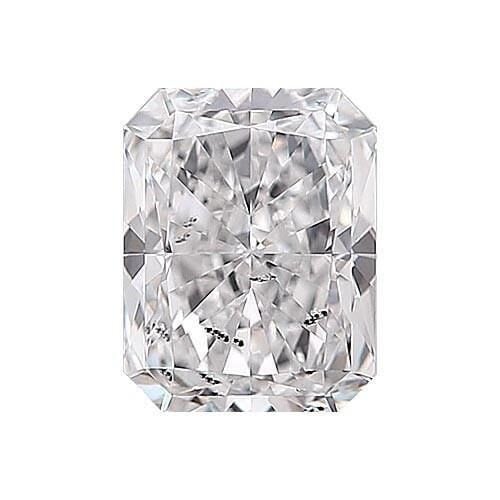What to consider when buying a radiant cut diamond
There are three important aspects to keep in mind when buying a radiant cut loose diamond: its proportions, colour and clarity.
Proportions
Unlike the round brilliant diamond, the GIA certificate does not list a cut grade for a radiant diamond cut. This is because radiant diamonds have many non-standardised facet structures and there can be a wide range of proportions they can be cut to.
Due to the lack of cut information provided by lab experts, inexperienced buyers may find it more difficult to pick out a radiant cut with a strong light return.
However, there are guidelines you can follow. For example, it is important to look for a diamond with a centred culet (the small, pointed area where the facets of the diamond meet at the bottom of the pavilion) and parallel sides. You should try to avoid a diamond that has uneven corners, i.e., either too wide or too narrow.
Colour
A radiant cut diamond tends to accentuate the diamond’s colour due to its facet arrangement trapping more colour. That is why so many fancy coloured diamonds are cut into radiants.
If you are thinking of investing in a colourless radiant cut diamond, it is recommended that you aim for a slightly higher colour range than you would if you were buying a round brilliant diamond, for example. While well-cut round brilliant diamonds tend to conceal the colour, radiants do the opposite. Stay in the upper near colourless range (G to H) or above (D-E-F) to find a radiant that looks white.



